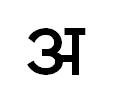Kha (Indic)
| Kha | |||||
|---|---|---|---|---|---|
| Devanagari | Bengali | Gurmukhi | Gujarati | Oriya | |
| ਖ | ખ | ||||
| Tamil | Telugu | Kannada | Malayalam | Sinhala | |
| - | ఖ | ಖ | ഖ | ඛ | |
| Thai | Lao | Tibetan | Burmese | Khmer | |
| ข ฃ | ຂ | ཁ | ခ | ខ | |
| Baybayin | Hanunoo | Buhid | Tagbanwa | Lontara | |
| - | - | - | - | - | |
| Balinese | Sundanese | Limbu | Tai Le | New Tai Lue | |
| ᬔ | ᮮ | ᤂ | ᥑ | ᦃ | |
| Lepcha | Saurashtra | Rejang | Javanese | Cham | |
| ᰂ | ꢓ | - | ꦑ | ꨇ | |
| Tai Tham | Tai Viet | Kayah Li | Phags-pa | Siddhaṃ | |
| ᨡ ᨢ | ꪂꪃ | ꤋ | ꡁ | ||
| Mahajani | Khojki | Khudabadi | Syloti | Meitei | |
| 𑅖 | 𑈉 | 𑊻 | ꠈ | ꯈ | |
| Modi | Tirhuta | Kaithi | Sora | Grantha | |
| 𑘏 | 𑒐 | 𑂎 | - | 𑌖 | |
| Chakma | Sharada | Takri | Kharoshthi | Brahmi | |
| 𑄈 | 𑆒 | 𑚋 | 𐨑 | ||
| Phonemic representation: | /kʰ/ | ||||
| IAST transliteration: | kha | ||||
| ISCII code point: | B4 (180) | ||||
Kha is the second consonant of Indic abugidas. In modern Indic scripts, kha is derived from the Brahmi letter ![]() , which is probably derived from the Aramaic
, which is probably derived from the Aramaic ![]() ("Q").
("Q").
Mathematics
Āryabhaṭa numeration
Aryabhata used Devanagari letters for numbers, very similar to the Greek numerals, even after the invention of Indian numerals. The values of the different forms of ख are:[1]
- ख [kə] = 2 (२)
- खि [kɪ] = 200 (२००)
- खु [kʊ] = 20,000 (२० ०००)
- खृ [kri] = 2,000,000 (२० ०० ०००)
- खॢ [klə] = 2×108 (२×१०८)
- खे [ke] = 2×1010 (२×१०१०)
- खै [kɛː] = 2×1012 (२×१०१२)
- खो [koː] = 2×1014 (२×१०१४)
- खौ [kɔː] = 2×1016 (२×१०१६)
History
The original Indic letter Kha is attested in three different forms. The first is in standard Brahmi, ![]() , the second in the Brahmi variant, Tocharian, also known as slanting Brahmi. The third form of Kha, in Kharoshthi (𐨑) was probably derived from Aramaic separately from the Brahmi letter.
, the second in the Brahmi variant, Tocharian, also known as slanting Brahmi. The third form of Kha, in Kharoshthi (𐨑) was probably derived from Aramaic separately from the Brahmi letter.
Brahmi Ka
The Brahmi letter ![]() , kha, is derived from the Aramaic
, kha, is derived from the Aramaic ![]() , Q, and is related to the modern Latin Q and archaic Greek Koppa.
, Q, and is related to the modern Latin Q and archaic Greek Koppa.
Tocharian Kha
The Tocharian, also called slanting Brahmi, letter ![]() is a variant of the Brahmi
is a variant of the Brahmi ![]() .
.
| Kha | Khā | Khi | Khī | Khu | Khū | Khr | Khr̄ | Khe | Khai | Kho | Khau | Khä |
|---|---|---|---|---|---|---|---|---|---|---|---|---|
| | | | | | | | | | |
Kharoshthi Kha
Like its Brahmi counterpart, the Kharoshthi letter 𐨑 is also derived from the Aramaic ![]() , and is thus related to Q and Koppa, as well as the Brahmi kha.
, and is thus related to Q and Koppa, as well as the Brahmi kha.
Devanagari Kha
| Devanāgarī |
|---|
 |
|
Diacritics, punctuation, symbols |
Kha (ख) is the second consonant of the Devanagari abugida. It ultimately arose from the Brahmi letter ![]() , after having gone through the Gupta letter
, after having gone through the Gupta letter ![]() . Letters that derive from it are the Gujarati letter ખ and the Modi letter 𑘏.
. Letters that derive from it are the Gujarati letter ખ and the Modi letter 𑘏.
Devanagari-using Languages
In all languages, ख is pronounced as [kʰə] or [kʰ] when appropriate. Because of borrowings from languages with different phonemic inventories, Devanagari has employed the nukta to create an additional related letter ख़ ḫa that can be used to retain non-native distinctions in Hindi texts.
| Kh | Kha | Khā | Khi | Khī | Khu | Khū | Khr | Khr̄ | Khl | Khl̄ | Khe | Khai | Kho | Khau |
|---|---|---|---|---|---|---|---|---|---|---|---|---|---|---|
| ख् | ख | खा | खि | खी | खु | खू | खृ | खॄ | खॢ | खॣ | खे | खै | खो | खौ |
Conjuncts With ख
Like most Devanagari letters, in modern texts ख does not form any irregular ligatures, and assumes a half form to create conjuncts, such as ख् + य = ख्य.[2]
Bengali Kha
The Bengali script খ is derived from the Siddhaṃ ![]() , and is marked by the lack of a horizontal head line, unlike its Devanagari counterpart, ख. The inherent vowel of Bengali consonant letters is /ɔ/, so the bare letter খ will sometimes be transliterated as "kho" instead of "kha". Adding okar, the "o" vowel mark, খো, gives a reading of /kho/.
, and is marked by the lack of a horizontal head line, unlike its Devanagari counterpart, ख. The inherent vowel of Bengali consonant letters is /ɔ/, so the bare letter খ will sometimes be transliterated as "kho" instead of "kha". Adding okar, the "o" vowel mark, খো, gives a reading of /kho/.
Like all Indic consonants, খ can be modified by marks to indicate another (or no) vowel than its inherent "a".
খ in Bengali-using languages
খ is used as a basic consonant character in all of the major Bengali script orthographies, including Bengali and Assamese.
Conjuncts with খ
Bengali খ does not exhibit any irregular conjunct ligatures, beyond adding the standard trailing forms of ব, য ya-phala, and র ra-phala, and the leading repha form of র.[3]
- খ্ + ব [kh+ba] gives us the ligature

- খ্ + য [kh+ya] gives us the ligature

- খ্ + র [kh+ra] gives us the ligature

- while র্ + খ [r+kha] gives us the ligature

Gurmukhi Kha
Khakhaa [kʰəkʰːɑ] (ਖ) is the seventh letter of the Gurmukhi alphabet. Its name is [kʰəkʰːɑ] and is pronounced as /kʰ/ when used in words. It is derived from the Laṇḍā letter kha, ultimately from the Brahmi kha. Gurmukhi kha does not have a special pairin or addha (reduced) form for making conjuncts, and in modern Punjabi texts does not take a half form or halant to indicate the bare consonant /kʰ/, although Gurmukhi Sanskrit texts may use an explicit halant.
Gujarati Kha
Kha (ખ) is the second letter of the Gujarati script. It is derived from 16th century Devanagari letter kha (ख), with the top bar removed. Like most Gujarati letters, it forms conjunct clusters with a half-form, where the vertical stem on the right is dropped and the remaining letter body appended to the following letter:
ખ્ખ
Oriya Kha
The Oriya letter kha (ଖ) is the second letter of the Oriya script. It is derived from the Brahmi-based Kalinga kha. It does not form conjunct ligatures with other characters, and like other Oriya letters with an open top, takes the subjoined matra form of the vowel i (ଇ):
ଖି
Its subjoined form is identical to, though smaller than, its full form:
ଖ୍ଖ
Telugu Kha
Kha (ఖ) is the second letter of the Telugu script. It is derived from the Bhattiprolu letter kha, and is very closely related to the Kannada ಖ kha. Since it lacks the v-shaped headstroke common to most Telugu letters, ఖ remains unaltered by most vowel matras, and its subjoined form is simply a smaller version of the normal letter shape:
ఖ్ఖ
Kannada Kha
Kannada kha (ಖ) is the second letter of its script, and like its closely related Telugu counterpart ఖ, is derived from the Bhattiprolu letter kha. Like its Telugu counterpart, it is generally unchanged by matras, and its subjoined form is the same as its full form:
ಖ್ಖ
Malayalam Kha
Kha (ഖ) is the second letter of the Malayalam script. It is derived from the Grantha kha. It does not exhibit ligation in conjuncts with other letters, does not have a chillu (bare consonant) form, and uses the explicit virama unless coupled with the normal post-base and repha consonant forms.
Sinhala Kha
The Sinhala Suddha ka (ඛ), called mahaapraana kayanna in Unicode, is the second letter of the Sinhala alphabet, and is part of the Miśra set of Sinhala consonants. Although it is derived from the Grantha letter kha, modern Sinhala no longer distinguishes between aspirated (Miśra) and unaspirated (Śuddha) consonants, and ඛ is pronounced the same as ක, ka, but is used for loanwords and in higher register writing. ඛ does not have any unique ligatures or conjunct forms, and displays an explicit virama as the first member of a conjunct cluster.
Thai High Kho
Kho khai (ข) and kho khuat (ฃ) are the second and third letters of the Thai script. They fall under the high class of Thai consonants. In IPA, kho khai and kho khuat are pronounced as [kʰ] at the beginning of a syllable and are pronounced as [k̚] at the end of a syllable. Both kho khwai and kho khuat are derived from the old Khmer kha. The next three letters of the alphabet, kho khwai (ค), kho khon (ฅ), and kho ra-khang (ฆ), are also named kho, however, they all fall under the low class of Thai consonants. Unlike many Indic scripts, Thai consonants do not form conjunct ligatures, and use the pinthu—an explicit virama with a dot shape—to indicate bare consonants.
Kho Khai
In the acrophony of the Thai script, khai (ไข่) means ‘egg’. Kho khai corresponds to the Sanskrit character ‘ख’.
Kho Khuat
In the acrophony of the Thai script, khuat (ขวด) means ‘bottle’. Kho khuat (ฃ) represents the voiceless velar fricativesound /x/ that existed in Old Thai at the time the alphabet was created but no longer exists in Modern Thai. When the Thai script was developed, the voiceless velar fricative sound did not have a Sanskrit or Pali counterpart so the character kho khai was slightly modified to create kho khuat. During the Old Thai period, this sound merged into the aspirated stop /kʰ/, and as a result the use of this letters became unstable. Although kho khuat is now obsolete, it remains in dictionaries, preserving the traditional count of 44 letters in the Thai alphabet. When the first Thai typewriter was developed by Edwin Hunter McFarland in 1892, there was simply no space for all characters, thus kho khuat was of the two letters left out along with kho khon.[4] Although kho khuat does not appear in modern Thai orthography, some writers and publishers are trying to reintroduce its usage.
Lao Kha
Kho sung or kʰāi (ຂ) is the second letter of the Lao script. It is derived from the old Khmer kha, and is essentially a fossil of Thai kho khai as it existed in the 14th century. Like its Thai counterpart, it is a high tone letter and does not form ligatures or conjuncts.
Tibetan Kha
Kha (ཁ) is the second letter of the Tibetan script, and is derived from the equivalent Siddhaṃ letter. As with all Tibetan letters, it can appear as a head consonant or subjoined to a head consonant. Like many Indic scripts, the halant - an explicit virama - can be used for indicating a bare consonant, although subjoined forms are used to form consonant conjuncts. The subjoined form of kha is essentially identical to its head form:
ཁྑ
Burmese Kha
Kha (ခ) is the second letter of the Burmese (Myanmar) script, and is probably derived from the Grantha letter kha. Like many Burmese letters, it is not seen with the virama, as /kh/ does not occur syllable finally. It can form conjuncts with other velar letters in abbreviations and foreign terms:
က္ခ
References
- ↑ Ifrah, Georges (2000). The Universal History of Numbers. From Prehistory to the Invention of the Computer. New York: John Wiley & Sons. pp. 447–450. ISBN 0-471-39340-1.
- ↑ "Hindi / हिन्दी Hindī" (PDF). KNAB: Place Names Database. Institute of the Estonian Language. Retrieved 23 September 2013.
- ↑ "The Bengali Alphabet" (PDF).
- ↑ "The origins of the Thai typewriter". Archived from the original on 5 December 2011. Retrieved 5 December 2011.
- The Unicode Standard. Chapter 9 South Asian Scripts-I, chapter 10 South Asian Scripts-II: the Unicode Consortium. February 2011. ISBN 978-1-936213-01-6.
- Kurt Elfering: Die Mathematik des Aryabhata I. Text, Übersetzung aus dem Sanskrit und Kommentar. Wilhelm Fink Verlag, München, 1975, ISBN 3-7705-1326-6
- Georges Ifrah: The Universal History of Numbers. From Prehistory to the Invention of the Computer. John Wiley & Sons, New York, 2000, ISBN 0-471-39340-1.
- B. L. van der Waerden: Erwachende Wissenschaft. Ägyptische, babylonische und griechische Mathematik. Birkhäuser-Verlag, Basel Stuttgart, 1966, ISBN 3-7643-0399-9
- Fleet, J. F. (January 1911). "Aryabhata's System of Expressing Numbers". Journal of the Royal Asiatic Society of Great Britain and Ireland: 109–126. ISSN 0035-869X. JSTOR 25189823.
- Fleet, J. F. (1911). "Aryabhata's System of Expressing Numbers". The Journal of the Royal Asiatic Society of Great Britain and Ireland. Royal Asiatic Society of Great Britain and Ireland. 43: 109–126. doi:10.1017/S0035869X00040995. JSTOR 25189823.